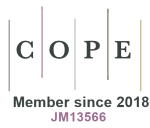Kidney transplant and living donor
DOI:
https://doi.org/10.33393/gcnd.2021.2250Keywords:
AB0 incompatibility, Contraindications to renal donation, Evaluation of the living donor, Living donationAbstract
Kidney transplant is the best therapy to manage end-stage kidney failure. The main barriers limiting this therapy are scarcity of cadaveric donors and the comorbidities of the patients with end-stage kidney failure, which prevent the transplant. Living kidney donor transplant makes it possible to obviate the problem of scarcity of cadaveric donor organs and also presents better results than those of cadaveric transplant. The principal indication of living kidney donor transplant is preemptive transplant. This allows the patient to avoid the complications of dialysis and it has also been demonstrated that it has better results than the transplant done after dialysis has been initiated. Priority indications of living donor transplant are also twins and HLA identical siblings. We also have very favorable conditions when the donor is young and male. On the contrary, the living donor transplant will have worse results if the donors are over 60-65 years and the recipients are young, and this can be a relative contraindication. There is an absolute contraindication for the living donation when the recipient has diseases with high risk of aggressive relapse in the grafts: focal and segmental hyalinosis that had early relapse in the first transplant; atypical hemolytic uremic syndrome due to deficit or malfunction of the complement regulatory proteins; early development of glomerulonephritis due to anti-glomerular basement membrane antibody in patients with Alport syndrome; primary hyperoxaluria.
Extreme caution should also be taken in the evaluation of the kidney donors. The risks of developing renal failure or other complications are low if an adequate pre-donation evaluation has been made according to the international guidelines.
References
- Kasiske BL, Asrani SK, Dew MA, et al. The Living Donor Collective: A Scientific Registry for Living Donors. Am J Transplant. 2017;17(12):3040-3048. https://doi.org/10.1111/ajt.14365 PMID 25626344
- Matas AJ, Smith JM, Skeans MA, et al. OPTN/SRTR 2013 Annual Data Report: kidney. Am J Transplant. 2015;15(S2)(suppl 2):1-34. https://doi.org/10.1111/ajt.13195 PMID:25626344
- Organ Procurement and Transplant Network (OPTN)/United Network for Organ Sharing (UNOS). National data reports, transplants by donor type. https://optn.transplant.hrsa.gov/data/view-data-reports/nationaldata/# (accessed january 28, 2021).
- Gill J, Joffres Y, Rose C, et al. The Change in Living Kidney Donation in Women and Men in the United States (2005-2015): A Population-Based Analysis. J Am Soc Nephrol. 2018;29(4):1301-1308. https://doi.org/10.1681/ASN.2017111160 PMID:29519800
- LaPointe Rudow D, Hays R, Baliga P, et al. Consensus conference on best practices in live kidney donation: recommendations to optimize education, access, and care. Am J Transplant. 2015;15(4):914-922. https://doi.org/10.1111/ajt.13173 PMID:25648884
- Lentine KL, Patel A. Risks and outcomes of living donation. Adv Chronic Kidney Dis. 2012;19(4):220-228. https://doi.org/10.1053/j.ackd.2011.09.005 PMID:22732041
- Lentine KL, Kasiske BL, Levey AS, et al. KDIGO Clinical Practice Guideline on the Evaluation and Care of Living Kidney Donors. Transplantation. 2017;101(8S)(suppl 1):S1-S109. https://doi.org/10.1097/TP.0000000000001769 PMID:28742762
- Lentine KL, Lam NN, Axelrod D, et al. Perioperative Complications After Living Kidney Donation: A National Study. Am J Transplant. 2016;16(6):1848-1857. https://doi.org/10.1111/ajt.13687 PMID:26700551
- Organ Procurement and Transplantation Network: Policies. http://optn.transplant.hrsa.gov/governance/policies/ (accessed december 27, 2020).
- Lentine KL, Kasiske BL, Levey AS, et al. Summary of Kidney Disease: Improving Global Outcomes (KDIGO) Clinical Practice Guideline on the Evaluation and Care of Living Kidney Donors. Transplantation. 2017;101(8):1783-1792. https://doi.org/10.1097/TP.0000000000001770PMID:28737659
- Vigneault CB, Asch WS, Dahl NK, Bia MJ. Should living kidney donor candidates with impaired fasting glucose donate? Clin J Am Soc Nephrol. 2011;6(8):2054-2059. https://doi.org/10.2215/CJN.03370411 PMID:21784837
- Gluecker TM, Mayr M, Schwarz J, et al. Comparison of CT angiography with MR angiography in the preoperative assessment of living kidney donors. Transplantation. 2008;86(9):1249-1256. https://doi.org/10.1097/TP.0b013e3181890810 PMID:19005407
- Delmonico F; Council of the Transplantation Society. A Report of the Amsterdam Forum On the Care of the Live Kidney Donor: Data and Medical Guidelines. Transplantation. 2005;79(6)(suppl):S53-S66. PMID:15785361
- Seem DL, Lee I, Umscheid CA, Kuehnert MJ. Excerpt from PHS guideline for reducing HIV, HBV and HCV transmission through organ transplantation. Am J Transplant. 2013;13(8):1953-1962. https://doi.org/10.1111/ajt.12386 PMID:23890284
- Mağden K, Ucar FB, Velioğlu A, et al. Donor Contraindications to Living Kidney Donation: A Single-Center Experience. Transplant Proc. 2015;47(5):1299-1301. https://doi.org/10.1016/j.transproceed.2015.04.050 PMID:26093703
- Abramowicz D, Cochat P, Claas FH, et al. European Renal Best Practice Guideline on kidney donor and recipient evaluation and perioperative care. Nephrol Dial Transplant. 2015;30(11):1790-1797. https://doi.org/10.1093/ndt/gfu216 PMID:25007790
- van Hardeveld E, Tong A; CARI. The CARI guidelines. Psychosocial care of living kidney donors. Nephrology (Carlton). 2010;15(suppl 1):S80-S87. https://doi.org/10.1111/j.1440-1797.2009.01213.x PMID:20591050
- Mandelbrot DA, Pavlakis M, Danovitch GM, et al. The medical evaluation of living kidney donors: a survey of US transplant centers. Am J Transplant. 2007;7(10):2333-2343. https://doi.org/10.1111/j.1600-6143.2007.01932.x PMID:17845567
- Pascual J, Abramowicz D, Cochat P, et al. European renal best practice guideline on the management and evaluation of the kidney donor and recipient. Nefrologia. 2014;34(3):293-301. PMID:24798566
- Kido R, Shibagaki Y, Iwadoh K, et al. Persistent glomerular hematuria in living kidney donors confers a risk of progressive kidney disease in donors after heminephrectomy. Am J Transplant. 2010;10(7):1597-1604. https://doi.org/10.1111/j.1600-6143.2010.03077.x PMID:20353466
- Locke JE, Reed RD, Massie A, et al. Obesity increases the risk of end-stage renal disease among living kidney donors. Kidney Int. 2017;91(3):699-703. https://doi.org/10.1016/j.kint.2016.10.014 PMID:28041626
- Massie AB, Muzaale AD, Luo X, et al. Quantifying Postdonation Risk of ESRD in Living Kidney Donors. J Am Soc Nephrol. 2017;28(9):2749-2755. https://doi.org/10.1681/ASN.2016101084 PMID:28450534
- Nalesnik MA, Woodle ES, Dimaio JM, et al. Donor-transmitted malignancies in organ transplantation: assessment of clinical risk. Am J Transplant. 2011;11(6):1140-1147. https://doi.org/10.1111/j.1600-6143.2011.03565.x PMID:21645251
- O'Keeffe LM, Ramond A, Oliver-Williams C, et al. Mid- and Long-Term Health Risks in Living Kidney Donors: A Systematic Review and Meta-analysis. Ann Intern Med. 2018;168(4):276-284. https://doi.org/10.7326/m17-1235 PMID: 29379948
- Reese PP, Bloom RD, Feldman HI, et al. Mortality and cardiovascular disease among older live kidney donors. Am J Transplant. 2014;14(8):1853-1861. https://doi.org/10.1111/ajt.12822PMID:25039276
- Moody WE, Ferro CJ, Edwards NC, et al; CRIB-Donor Study Investigators. Cardiovascular Effects of Unilateral Nephrectomy in Living Kidney Donors. Hypertension. 2016;67(2):368-377. https://doi.org/10.1161/HYPERTENSIONAHA.115.06608 PMID:26754643
- Mjøen G, Hallan S, Hartmann A, et al. Long-term risks for kidney donors. Kidney Int. 2014;86(1):162-167. https://doi.org/10.1038/ki.2013.460 PMID:24284516
- Muzaale AD, Massie AB, Wang MC, et al. Risk of end-stage renal disease following live kidney donation. JAMA. 2014;311(6):579-586. https://doi.org/10.1001/jama.2013.285141 PMID: 24519297
- Boudville N, Prasad GV, Knoll G, et al; Donor Nephrectomy Outcomes Research (DONOR) Network. Meta-analysis: risk for hypertension in living kidney donors. Ann Intern Med. 2006;145(3):185-196. https://doi.org/10.7326/0003-4819-145-3-200608010-00006PMID:16880460
- Garg AX, Prasad GV, Thiessen-Philbrook HR, et al; Donor Nephrectomy Outcomes Research (DONOR) Network. Cardiovascular disease and hypertension risk in living kidney donors: an analysis of health administrative data in Ontario, Canada. Transplantation. 2008;86(3):399-406. https://doi.org/10.1097/TP.0b013e31817ba9e3 PMID:18698242
- Lentine KL, Vijayan A, Xiao H, et al. Cancer diagnoses after living kidney donation: linking U.S. Registry data and administrative claims. Transplantation. 2012;94(2):139-144. https://doi.org/10.1097/TP.0b013e318254757d PMID:22825543
- de Weerd AE, Betjes MGH. AB0-Incompatible Kidney Transplant Outcomes: A Meta-Analysis. Clin J Am Soc Nephrol. 2018;13(8):1234-1243. https://doi.org/10.2215/CJN.00540118PMID:30012630
- Gambaro G, Zaza G, Citterio F, Naticchia A, Ferraro PM. Living kidney donation from people at risk of nephrolithiasis, with a focus on the genetic forms. Urolithiasis. 2019;47(1):115-123. https://doi.org/10.1007/s00240-018-1092-4 PMID:30470867
- Przech S, Garg AX, Arnold JB, et al; Donor Nephrectomy Outcomes Research (DONOR) Network. Financial Costs Incurred by Living Kidney Donors: A Prospective Cohort Study. J Am Soc Nephrol. 2018;29(12):2847-2857. https://doi.org/10.1681/ASN.2018040398 PMID:30404908











